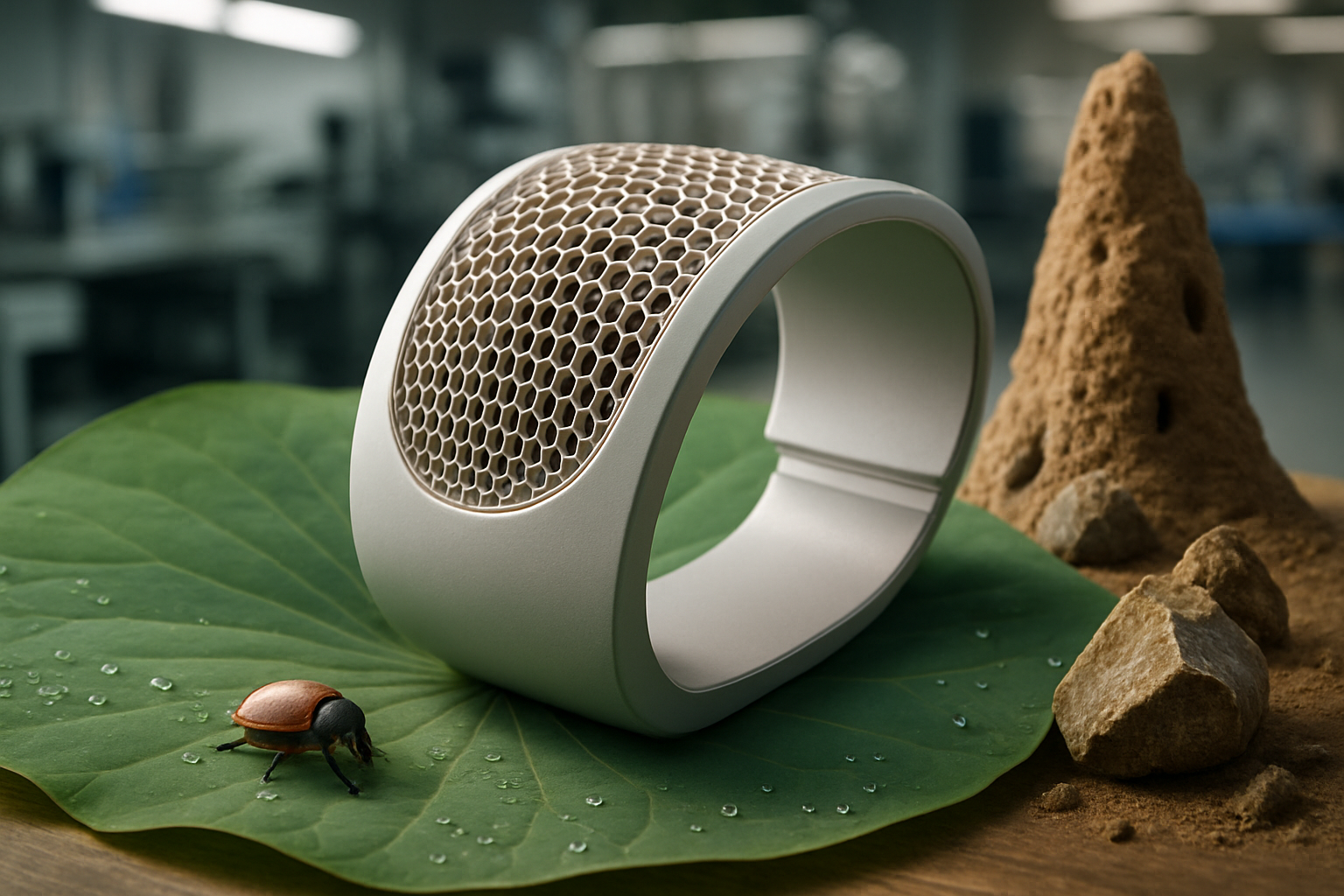Biomimicry in Industrial Design: Nature-Inspired Innovation
Revolutionizing product development and manufacturing processes, biomimicry is emerging as a groundbreaking approach in industrial design. By emulating nature's time-tested patterns and strategies, businesses are unlocking sustainable solutions and driving innovation across various sectors.

Historical Context and Development
The roots of biomimicry can be traced back to ancient times when humans observed and mimicked nature to solve problems. However, the modern concept of biomimicry as a systematic approach to innovation gained prominence in the late 20th century. Janine Benyus, a biologist and innovation consultant, popularized the term in her 1997 book “Biomimicry: Innovation Inspired by Nature,” sparking a renewed interest in nature-inspired design across various industries.
Since then, biomimicry has evolved from a niche concept to a recognized discipline in industrial design and engineering. Research institutions, corporations, and startups have increasingly invested in biomimetic research and development, leading to groundbreaking innovations in materials science, architecture, and product design.
Key Principles of Biomimicry in Industrial Design
Biomimicry in industrial design is guided by several core principles that aim to translate nature’s strategies into human-made solutions:
-
Form Follows Function: Nature optimizes designs for specific functions, often achieving multiple objectives simultaneously. Industrial designers apply this principle to create products that are both aesthetically pleasing and highly functional.
-
Resource Efficiency: Natural systems operate on closed-loop cycles, minimizing waste and maximizing resource efficiency. This principle inspires industrial processes that aim for zero waste and circular economy models.
-
Resilience and Adaptability: Biological systems demonstrate remarkable resilience and adaptability to changing environments. Designers incorporate these qualities into products and systems to enhance durability and flexibility.
-
Multi-functional Design: Many natural structures serve multiple purposes simultaneously. This principle encourages designers to create products with integrated functionalities, reducing complexity and material use.
-
Ecosystem Thinking: Nature thrives on interconnected systems and symbiotic relationships. Applying this principle to industrial design promotes holistic approaches that consider the entire lifecycle and ecosystem impact of products.
Applications Across Industries
Biomimicry has found applications across a wide range of industries, revolutionizing product development and manufacturing processes:
Aerospace and Automotive
The aerospace and automotive industries have embraced biomimicry to improve aerodynamics, fuel efficiency, and structural integrity. For example, the design of the high-speed Japanese bullet train was inspired by the kingfisher’s beak, resulting in reduced noise and energy consumption.
Materials Science
Nature’s ability to create strong, lightweight materials has inspired innovations in materials science. Spider silk, known for its strength-to-weight ratio, has led to the development of high-performance fibers used in various applications, from bulletproof vests to medical implants.
Architecture and Construction
Biomimetic principles have transformed building design and construction techniques. The Eastgate Centre in Zimbabwe, inspired by termite mounds, uses passive cooling systems that significantly reduce energy consumption compared to conventional air conditioning.
Energy and Clean Technology
Photosynthesis, the process by which plants convert sunlight into energy, has inspired advancements in solar cell technology. Researchers are developing artificial photosynthesis systems that could revolutionize clean energy production.
Challenges and Future Directions
While biomimicry offers immense potential for sustainable innovation, several challenges must be addressed:
-
Scalability: Translating nature-inspired solutions to industrial scale production can be complex and requires significant research and development.
-
Interdisciplinary Collaboration: Effective biomimicry requires collaboration between biologists, engineers, designers, and business professionals, necessitating new models of interdisciplinary teamwork.
-
Education and Training: Integrating biomimicry principles into design and engineering curricula is crucial for widespread adoption and innovation.
-
Regulatory Frameworks: As biomimetic products enter the market, regulatory bodies must adapt to assess and approve these novel technologies.
The future of biomimicry in industrial design looks promising, with emerging trends including:
-
AI-powered biomimicry: Artificial intelligence and machine learning are being used to analyze biological systems and generate biomimetic design solutions more efficiently.
-
Nano-scale biomimicry: Advancements in nanotechnology are enabling the replication of nature’s molecular-level processes, opening new frontiers in materials science and medicine.
-
Bioengineering and synthetic biology: The convergence of biomimicry with genetic engineering and synthetic biology is creating new possibilities for designing living materials and systems.
Practical Insights for Implementing Biomimicry in Business
-
Start with function: Identify the core function you’re trying to achieve, then research how nature solves similar challenges.
-
Embrace interdisciplinary teams: Combine expertise from biology, engineering, design, and business to foster innovative solutions.
-
Invest in biomimicry databases: Utilize existing biomimicry databases and resources to accelerate the innovation process.
-
Consider lifecycle impact: Evaluate the entire lifecycle of biomimetic products, ensuring sustainability from production to disposal.
-
Engage in biomimicry networks: Participate in biomimicry networks and conferences to stay updated on the latest research and applications.
-
Integrate biomimicry into R&D processes: Develop systematic approaches to incorporate biomimicry principles into your research and development workflows.
-
Educate and train employees: Provide training programs to help your team understand and apply biomimicry concepts effectively.
As industries continue to grapple with sustainability challenges and the need for innovation, biomimicry offers a powerful framework for developing solutions that are both environmentally responsible and economically viable. By looking to nature’s proven strategies, businesses can unlock new pathways to innovation, efficiency, and sustainability. The integration of biomimicry into industrial design not only promises technological advancements but also fosters a deeper connection between human-made systems and the natural world, paving the way for a more harmonious and sustainable industrial future.





